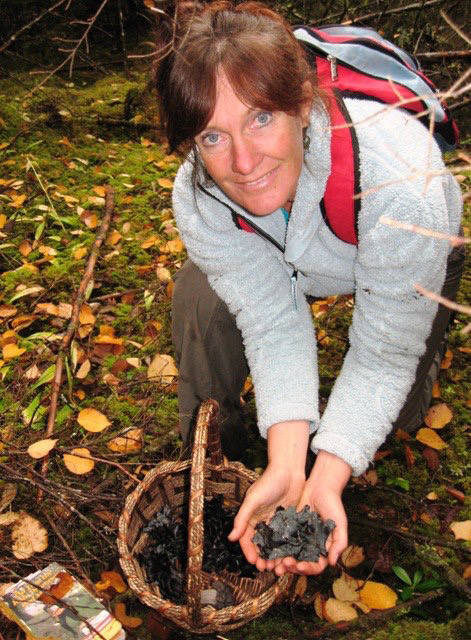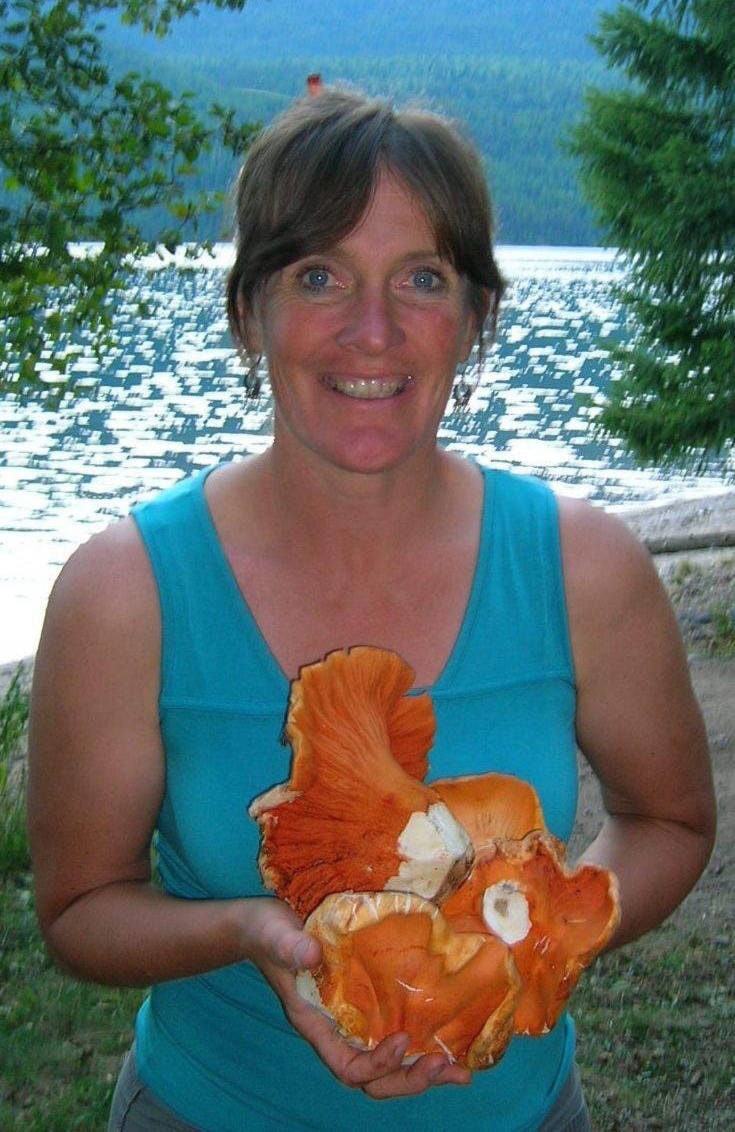Wild mushrooms are incredibly fascinating and important. If you think they are weird, scary, confusing or wonderfully amazing, read on.
First off, mushrooms are not plants. Mushrooms are the “fruiting” spore-bearing, reproductive incubator and dispenser of some fungi species. The word mushroom refers to the macrofungi “fruits” that you can see without a microscope. The actual organism that produces the mushrooms is an often huge, unseen fungal network of fine thread-like mycelium which thrives in soil, under bark or in the decomposing organisms or organic waste that it’s consuming.
Plants make their food using the sun’s energy (photosynthesis), while animals eat their food then digest it internally. Fungi mycelium grows into and around their food source, excretes enzymes that digest their food externally, and then absorbs the nutrients. When the mycelium is mature and environmental conditions are suitable (cool and moist), out pop the mushrooms. Mushrooms are formed above ground while truffles form in the soil.
More than 500 species of mushrooms are documented in B.C. and there are way more that haven’t been classified yet. B.C. has an incredible diversity of mushrooms sprouting from old, mossy forests — especially those near lakes and rivers, — in fertile meadows and moist grasslands. Fungi are very ancient organisms fitting into various environmental niches. B.C.’s amazingly diverse landscape with coastal to interior, and hot, dry south to cold north climates combined with its extremely varied topography has created innumerable microclimates that are perfectly suited to mushroom diversity. Also, we live on the doorstep of the mushroom capital of the world, the Columbia Mountains (includes the Monashees, Selkirks, Valhallas, Purcells and Cariboos), where the greatest diversity of mushrooms are found. That’s why wild mushroom foraging is so dangerous; there are many look-alikes and no rules of thumb for identifying edibles.
Most wild mushroom neophytes look for the typical mushrooms with caps, gills and stalks that are mostly related to the familiar, cultivated agaric button mushrooms from stores. But that’s only a few of the mushroom families. Wild mushrooms display an amazing array of sizes, shapes, colours, textures and aromas from spiky, white, pink or yellow coral fungus to huge, bright orange lobsters, jelly-like blob gel fungi, round puffballs, straps, conks and so many others that it’s hard to believe. Mushroom families are identified by their characteristics; are they capped with gills, teeth or spongy underneath? Do they have a stalk with or without a ring? Or are they other shapes or textures, etc?
Mushrooms are often mistaken for fallen leaves at first glance. They really are camouflaged. If you want to while away a warm fall day with a real challenge, get a mushroom field guide and learn to identify them. The simplest way to learn about wild mushrooms is by starting to identify the ones that may grow in your yard or neighbourhood using a good, locally reliable mushroom field guide. My favorite guide for B.C. is All That The Rain Promises by David Arora. It’s pocket-size, simple to use and fun to read.
So what are mushrooms doing in the forests?
Ecologists and microbiologists are discovering the vital roles fungi play in our forests. Fungi function as ecological components in B.C.s forests by breaking down and recycling nutrients from dead and decaying matter (saprophytic) as well as thinning out living organisms (parasitic).
They also coexist in a vital mycorrhizal relationship with trees by breaking down organic matter and helping them to absorb nutrients through their roots (symbiotic); provide important food sources for many animals from worms, to rodents and squirrels, people and more along with providing sources of inspiration, education and a renewable economic resource.
Head on out into a forest on a nice fall day for fresh air and mentally relaxing exercise to enjoy mushrooms. The good news is you don’t have to eat mushrooms to enjoy them! They make great photos with a digital camera or phone. And that helps identify them. Enjoy!
Roseanne Van Ee enthusiastically shares her knowledge of the outdoors to help readers experience and enjoy nature. Follow her on Facebook for more.

